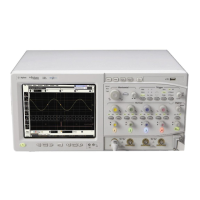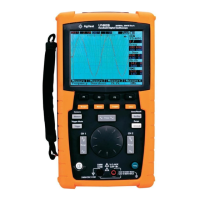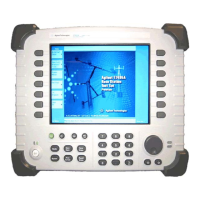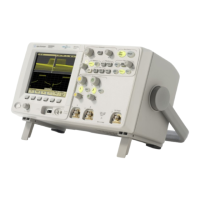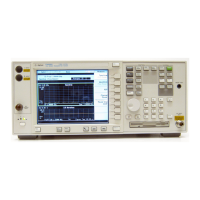80 6000 Series Oscilloscope User’s Guide
2 Front-Panel Controls
Passive probes that do not have a pin that connects to the ring
around the BNC connector will not be recognized by the
oscilloscope, and you must set the probe attenuation factor
manually.
Active Probes
All 6000 Series oscilloscopes except the 100 MHz bandwidth
models (MSO/DSO6012A and MSO/DSO6014A/L) have an
AutoProbe interface. Most Agilent active probes are compatible
with the AutoProbe interface. The AutoProbe interface uses a
series of contacts directly below the channel’s BNC connector to
transfer information between the oscilloscope and the probe.
When you connect a compatible probe to the oscilloscope, the
AutoProbe interface determines the type of probe and sets the
oscilloscope’s parameters (units, offset, attenuation, coupling,
and impedance) accordingly.
Manually Setting the Probe Attenuation Factor
If you connect a probe that the oscilloscope does not
automatically identify, you can set the attenuation factor as
follows:
1 Press the channel key
2 Press the Probe softkey
3 Turn the Entry knob to set the attenuation factor for the
connected probe.
The attenuation factor can be set from 0.1:1 to 1000:1 in a 1-2-5
sequence. The probe attenuation factor must be set properly for
measurements to be made correctly.
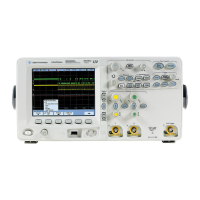
